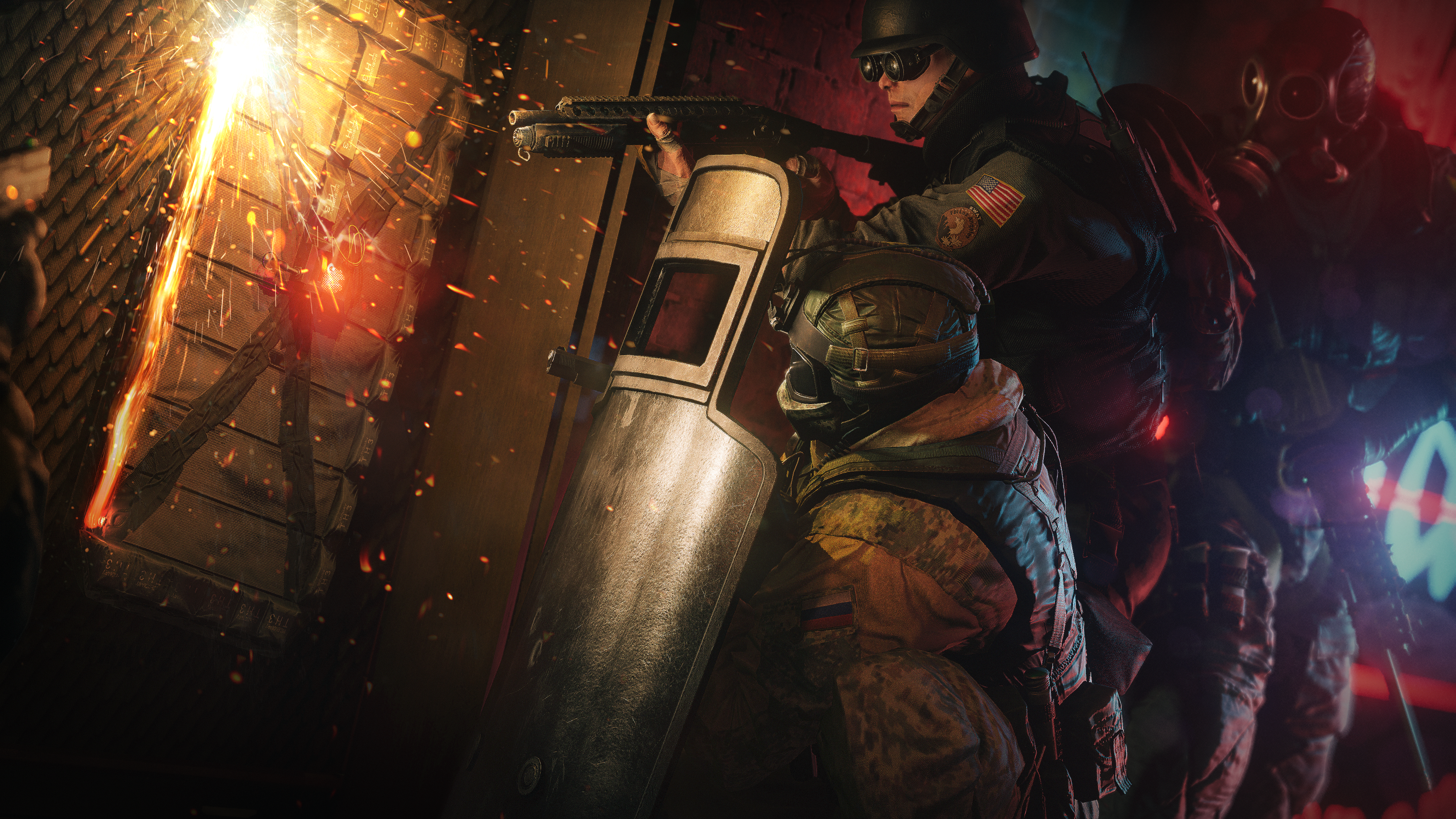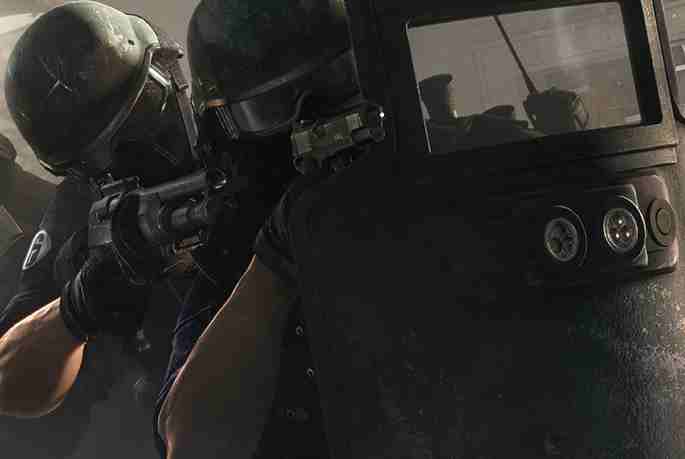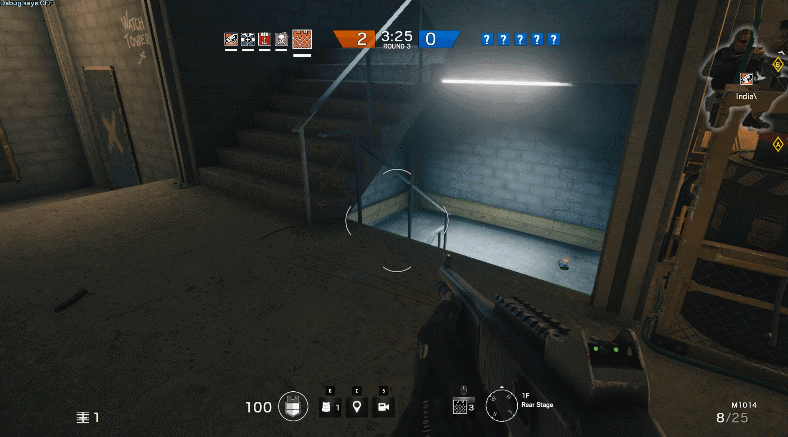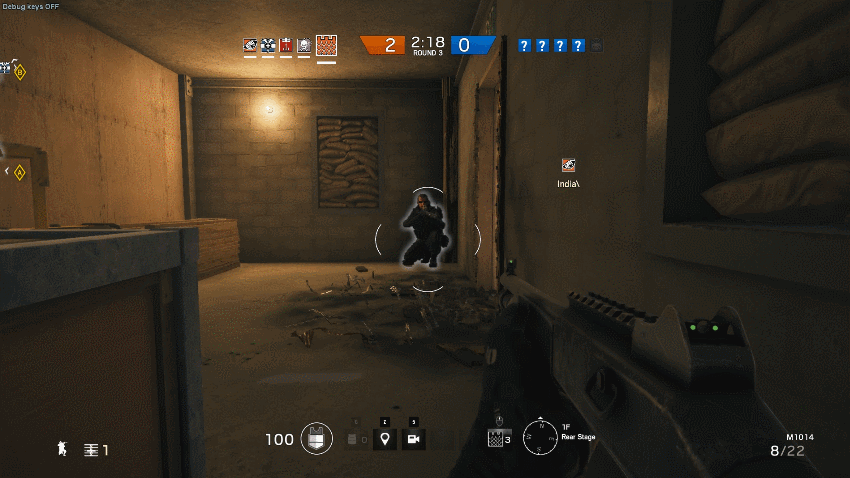Rainbow Six: Siege made me think hard about shotguns


Watch our breakdown of the Siege from a hardcore FPS player's perspective.
Rainbow Six: Siege is the first game in a while to make me treat shotguns as a complex defensive tool rather than a close quarters firework. They’re not positioned as the inverse of rifles, but as unique weapons that function as an area of effect deterrent rather than corner-camping face plungers. While on defense, shotgunners plug holes in the fort that static defenses can’t. They’re less important as eliminators, but more important as manipulators. It just takes a few hours to unlearn old run and gun habits. Luckily, I was able to spend a few hours in shotgun school at a preview event for Siege last week.
Building literacy
I went into the event intent on focusing on a specific weapon type. Since most of the levels consist of cramped, conjoined rooms, I settled on discovering how the team-based tactics would change (or not) my use of the staple FPS weapon. First, I had to learn to read Siege’s dynamic level design. A significant portion of the surfaces in any map can be destroyed in some manner, and on defense, it’s important to know what can be destroyed and in which ways.
In the defensive side of the five-on-five multiplayer, we were tasked with defending a room or two, either protecting a bomb or hostage, and given a few minutes to set up defensive reinforcements. It was my favorite moment on either side because it forced me to analyze the map over and over again. After ten or so playthroughs (and many mistakes later) I started thinking in terms of sightlines, not only through doorways, but through potential holes blasted in the walls, ceiling, or floor. With my sight-enlightenment, I would deploy portable cover in tandem with my team’s defenses, often a series of coordinated wall reinforcements and explosives. It worked sometimes!
It took plenty of clumsy losses to start thinking about defensive structures—wall reinforcements, barricades, mounted gun placements, razorwire—as pieces of a dense cloud meant to dull offensive penetration. A good offense will be sharp and precise. It’s up to the defense to misdirect the other team and send their surgery awry. Since it was impossible to cover every insertion point with barricades and non-player deterrents, the holes in a given defense were left up to the players to patrol—aka,me and my bad shotgun skills.
Speed reading
Shotguns were perfect for this role because their area of effect is wider than rifle weaponry —the more screen area a weapon could influence, the easier I could send a message to enemy players. In the case of shotguns in Siege, this message was often, ‘Find another way, pal.’ The Other Way was ideally littered with boobytraps or an ambush, but usually just my dead teammates. Friendship takes time.
Using a shotgun meant trading in precision for reactivity—a wider reticle, but less damage per pixel, and even less over a distance. I could spot someone across the room, fire off a shot, and they might get hit, just not lethally. From the offensive perspective, getting nicked by a few pellets at a distance wouldn’t take me out, but the UI would light up with red to indicate I’m getting hit, which was motive enough to back up and reorganize with teammates—or to do something rash. Pinches of damage kept enemies at bay as opposed outright dead.
Pinches of damage kept enemies at bay as opposed outright dead.
It was rarely helpful to camp and wait for a close up kill with a shotgun. A snap reaction from the opposing player with any weapon took me out as quick as any other weapon. As a team, we were most effective when we determined where would would want to push the opposition and set up defenses around the same plan. As a player, I was most effective with my shotgun, setting up cover, monitoring a few sightlines and points of entry, and deterring enemy players however possible. I didn’t get many kills doing this, but I felt good, like a watch dog. A good watch dog, such a good boy.
The biggest gaming news, reviews and hardware deals
Keep up to date with the most important stories and the best deals, as picked by the PC Gamer team.
I just wish pulling the trigger felt as risky and thoughtful as everything that comes prior.
Total recoil recall
I was 13 the first time I fired a real shotgun. It knocked me on my ass. My ears rang for a few days. I didn’t quite develop affection for the weapon after that—I’ve seen what they can do to a mallard head and it isn’t exactly ‘cool’—but I certainly developed fear-induced respect for a 12-gauge’s destructive area of effect. Which is why I find it strange and slightly off-putting that recoil is hardly noticeable in Siege.
For a game based on realistic destruction, serious tactics, and set in somber fictional future, it’s weird that the guns aren’t treated with complete weight and consequence. Everything in Siege is so deliberate. It’s been a long, long time since I’ve thought so hard about something as mundane as passing through a doorway, so when I fire a weapon through a wall six times in two seconds until there’s no wall left with little to no effect on my aim, it feels extremely dissonant. If I’m committing to movement, team tactics, and structural reinforcement placements, shouldn’t I also have to commit to each shot? Maybe the fiction assumes my character is such a super soldier that they can recover from recoil without issue, or maybe it’s that the developers wanted to skirt a potentially frustrating mechanic to open the door to more inexperienced players. Either way, it doesn’t sit quite right with me.
I worry that by not going all in on treating each weapon as exactly what it is—a powerful, dangerous, cumbersome device—it’ll be easier for teamwork to fall apart in favor of happy hairtriggers. Still, Rainbow Six: Siege made me think more deeply about almost every facet of using a shotgun than any game in recent memory, and all in conjunction with a team of four other people in a small space under the pressure of time. And the shotgun is just one weapon of many among an assortment of diverse loadouts and levels. The variability here is nuts; I’m forced to actually think and adapt rather than fire willy-nilly into the sky. It was so refreshing to crave fluid communication over a good K/D ratio.
I just wonder whether the weapon design would be more interesting if, say, overcommitting to a few shots had me firing into the ceiling, learning new words from my friends and generating stories through that difficulty, rather than pumping out bullets frivolously. Rainbow Six: Siege is out December 1st, and there'll be a lot more to examine—shotguns and otherwise—when we've got unlimited time with it.
James is stuck in an endless loop, playing the Dark Souls games on repeat until Elden Ring and Silksong set him free. He's a truffle pig for indie horror and weird FPS games too, seeking out games that actively hurt to play. Otherwise he's wandering Austin, identifying mushrooms and doodling grackles.




